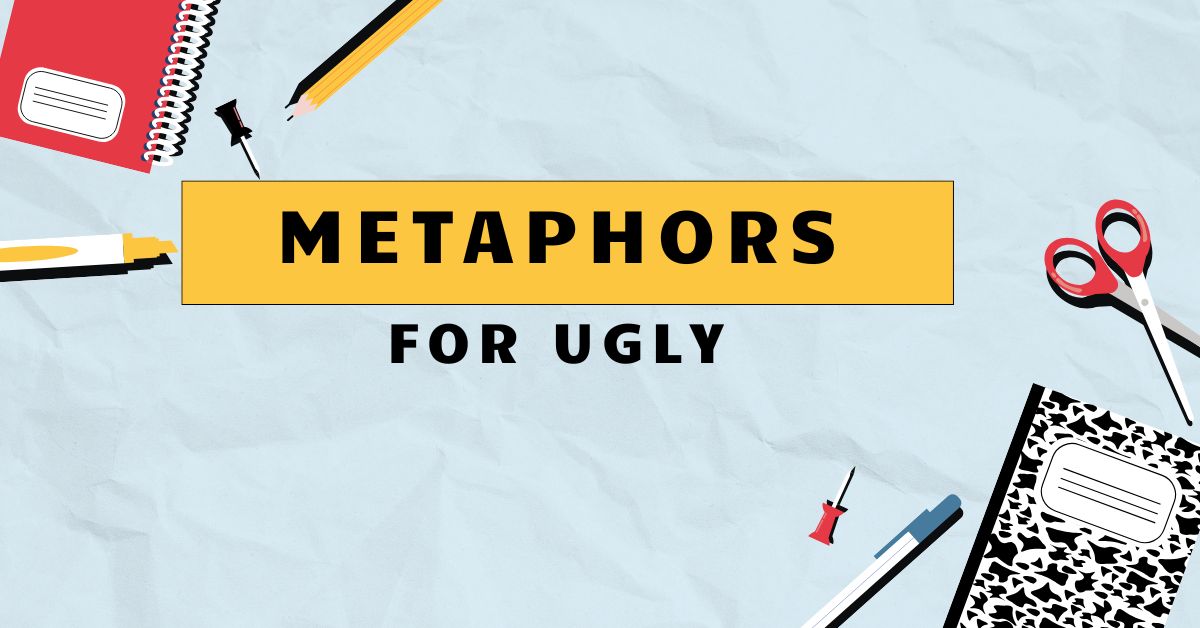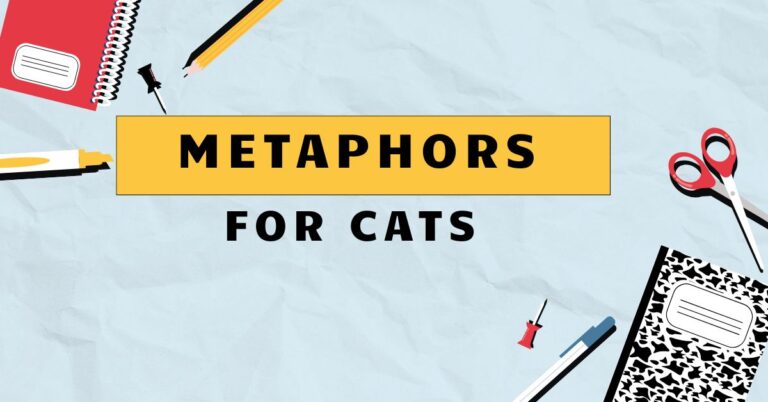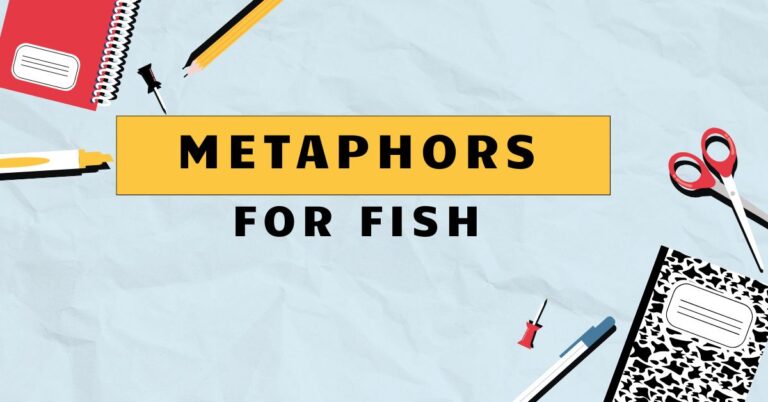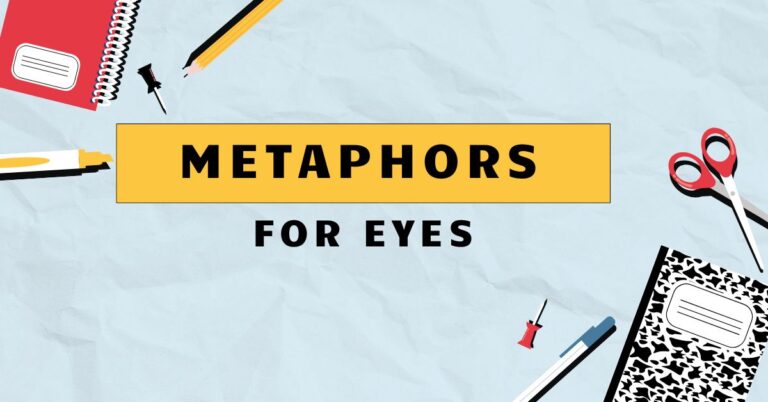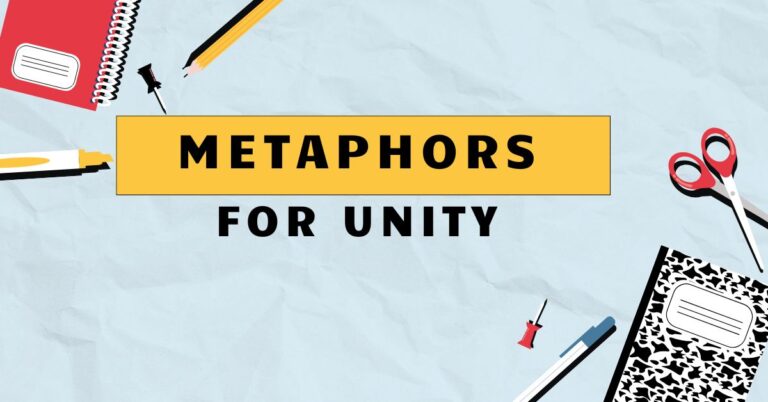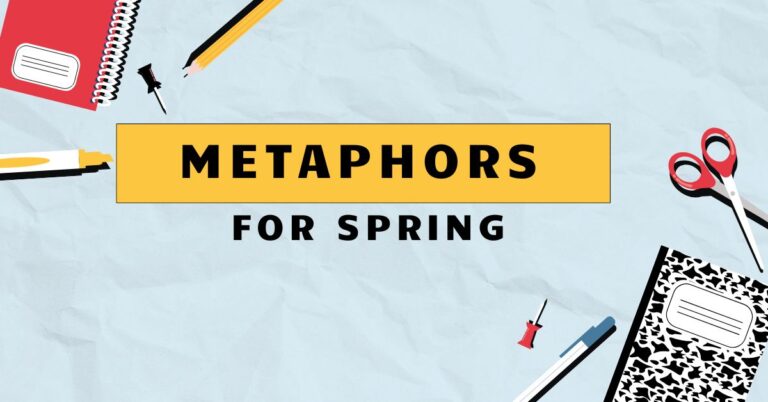41 Metaphors for Ugly: A Comprehensive Grammar Guide
Metaphors are powerful tools that enrich our language, allowing us to express abstract concepts and evoke vivid imagery. When it comes to describing something as “ugly,” metaphors can transform a simple adjective into a nuanced and impactful statement.
Understanding how to use metaphors effectively not only enhances your writing and speaking skills but also deepens your appreciation of the English language. This article will guide you through various metaphors for “ugly,” their structural elements, usage rules, and common mistakes to avoid.
This guide is perfect for English language learners, writers, and anyone looking to expand their vocabulary and expressive abilities.
Table of Contents
- Introduction
- Definition of Metaphor and “Ugly”
- Structural Breakdown of Metaphors for Ugly
- Types of Metaphors for Ugly
- Examples of Metaphors for Ugly
- Usage Rules for Metaphors of Ugly
- Common Mistakes When Using Metaphors for Ugly
- Practice Exercises
- Advanced Topics in Metaphorical Language
- Frequently Asked Questions
- Conclusion
Definition of Metaphor and “Ugly”
Ametaphoris a figure of speech that directly compares two unrelated things, asserting that one thing *is* another. Unlike similes, which use “like” or “as” to make a comparison, metaphors imply a resemblance or shared quality without explicitly stating it.
Metaphors are used to add depth, color, and creativity to language, making it more engaging and memorable. They operate by transferring qualities from one concept to another, enriching the audience’s understanding.
In the context of this article, we’re focusing on metaphors that convey the idea of “ugly.” The word”ugly”typically refers to something that is unpleasant or offensive to the senses, particularly sight. It can describe physical appearance, behavior, or even abstract concepts.
However, the concept of ugliness is subjective and can vary greatly depending on cultural norms, personal preferences, and context. Metaphors for “ugly” aim to capture this unpleasantness in a more evocative and imaginative way.
Structural Breakdown of Metaphors for Ugly
Metaphors, in general, consist of two main elements: thetenorand thevehicle. The tenor is the subject to which metaphorical attributes are ascribed (in our case, something “ugly”), and the vehicle is the object or concept whose attributes are borrowed.
For example, in the metaphor “His soul was a festering wound,” the tenor is “his soul,” and the vehicle is “a festering wound.” The metaphor suggests that his soul possesses the unpleasant qualities associated with a festering wound. Effective metaphors create a clear connection between the tenor and the vehicle, allowing the audience to understand the intended meaning.
When constructing metaphors for “ugly,” consider the specific aspect of ugliness you want to emphasize. Is it the visual repulsiveness, the moral repugnance, or the emotional distress?
The choice of vehicle will depend on the desired effect. For instance, comparing something to “a festering wound” emphasizes decay and disease, while comparing it to “a twisted knot” highlights deformity and irregularity.
Types of Metaphors for Ugly
Metaphors for “ugly” can be categorized based on the type of imagery they evoke. Here are some common categories:
Animalistic Metaphors
These metaphors draw comparisons between something ugly and animals or animalistic traits. These often involve creatures associated with unpleasantness or repulsiveness.
Nature-Based Metaphors
These metaphors use elements of nature, such as storms, barren landscapes, or toxic plants, to convey ugliness. They emphasize the destructive or unpleasant aspects of the natural world.
Object-Based Metaphors
These metaphors compare something ugly to inanimate objects that are broken, damaged, or inherently unattractive. These can range from rusty metal to shattered glass.
Abstract Metaphors
These metaphors use abstract concepts, such as disease, corruption, or chaos, to represent ugliness. They often delve into the moral or emotional dimensions of ugliness.
Color-Based Metaphors
These metaphors use colors associated with sickness, decay, or unpleasantness to describe ugliness. Examples include sickly greens, murky browns, and jaundiced yellows.
Decay Metaphors
These metaphors directly reference the process of decay, rot, and decomposition to evoke a sense of ugliness. These are particularly effective for emphasizing deterioration and unpleasantness.
Examples of Metaphors for Ugly
The following tables provide examples of metaphors for “ugly,” categorized by type. Each example aims to illustrate how different vehicles can be used to convey the concept of ugliness in various contexts.
Animalistic Metaphor Examples
This table showcases animalistic metaphors, where the subject is likened to an animal or its characteristics to convey ugliness or unpleasantness.
| Metaphor | Explanation |
|---|---|
| His face was a rat’s nest of wrinkles. | The comparison to a rat’s nest suggests a tangled, unpleasant mess. |
| The building looked like a sickly toad squatting on the landscape. | The image of a sickly toad evokes feelings of repulsiveness and disease. |
| Her personality was a viper’s coil of malice. | The viper’s coil suggests hidden danger and venomous intent. |
| The room was a pigsty of discarded clothes and trash. | A pigsty is a dirty, unkempt place, implying extreme disorder and filth. |
| His laughter was the caw of a crow, grating and unpleasant. | The harsh caw of a crow symbolizes an unpleasant and jarring sound. |
| The abandoned car was a rusty, skeletal vulture on the roadside. | The vulture image suggests decay, death, and a repulsive sight. |
| The politician’s words were a swarm of locusts, devouring the truth. | Locusts represent destruction and an overwhelming, unpleasant force. |
| The old house was a spider’s web of cracks and decay. | The spider’s web symbolizes entrapment, neglect, and a creepy atmosphere. |
| His smile was a shark’s grin, predatory and menacing. | A shark’s grin suggests danger, aggression, and a lack of empathy. |
| The swamp was a belly of a beast, full of unseen dangers. | This suggests a dark, mysterious, and potentially harmful place. |
| The old coat was a moth-eaten shroud, barely holding together. | The moth-eaten shroud evokes a sense of decay, neglect, and death. |
| The sculpture was a grotesque gargoyle, mocking beauty. | Gargoyles are often depicted as ugly and distorted figures. |
| His argument was a snake pit of contradictions and lies. | A snake pit represents danger, confusion, and untrustworthiness. |
| The painting was a hideous chimera, a monstrous combination of styles. | A chimera is a mythical creature composed of disparate, often frightening parts. |
| The city was a concrete jungle, devoid of natural beauty. | The term “concrete jungle” implies a harsh, unwelcoming environment. |
| His voice was a rasping croak, painful to the ears. | A rasping croak suggests an unpleasant, grating sound. |
| The garden was a slug trail of destruction after the storm. | A slug trail represents damage and an unpleasant residue. |
| The abandoned factory was a dormant beast, waiting to awaken. | The dormant beast suggests potential danger and a menacing presence. |
| The graffiti was a pack of wolves tearing at the city’s facade. | This conveys an image of destructive forces and vandalism. |
| The polluted river was a serpent’s vein, poisoning the land. | The serpent’s vein suggests a toxic and harmful presence. |
| The project was a dead duck from the start, doomed to fail. | “Dead duck” is an idiom that means something is certain to fail. |
| The old car was a metal rhinoceros, bulky and unattractive. | The metal rhinoceros suggests awkwardness and a lack of grace. |
Nature-Based Metaphor Examples
The table below provides nature-based metaphors for expressing ugliness, drawing upon natural elements to convey unpleasantness.
| Metaphor | Explanation |
|---|---|
| The landscape was a barren wasteland of cracked earth and withered plants. | A barren wasteland signifies desolation and lack of life. |
| Her heart was a frozen tundra, incapable of warmth. | A frozen tundra symbolizes emotional coldness and isolation. |
| The swamp was a cesspool of stagnant water and decaying vegetation. | A cesspool suggests filth, pollution, and an unpleasant environment. |
| The room was a dust bowl of forgotten memories. | A dust bowl represents neglect, decay, and a lack of vitality. |
| His ideas were a tangled thicket of contradictions. | A tangled thicket implies confusion and difficulty in navigating. |
| The forest was a dark abyss of twisted trees and shadows. | A dark abyss suggests danger, mystery, and a sense of unease. |
| The relationship was a poison ivy, causing constant irritation. | Poison ivy symbolizes something that causes persistent discomfort and pain. |
| The city was a concrete jungle, devoid of natural beauty. | Repetition for emphasis, the concrete jungle implies a harsh, unwelcoming environment. |
| Her words were a bitter wind, chilling the room. | A bitter wind suggests harshness and emotional coldness. |
| The old house was a rotting log, crumbling into the earth. | A rotting log symbolizes decay and decline. |
| The project was a dead tree, bearing no fruit. | A dead tree represents something that is unproductive and lifeless. |
| His spirit was a withered leaf, detached from life. | A withered leaf symbolizes fragility, decline, and detachment. |
| The street was a muddy trench after the rainstorm. | A muddy trench suggests unpleasantness, difficulty, and a dirty environment. |
| Her smile was a false spring, promising warmth but delivering cold. | A false spring symbolizes deception and unfulfilled promises. |
| The painting was a storm-tossed sea of chaotic colors. | A storm-tossed sea represents turmoil, chaos, and a lack of control. |
| The music was a cacophony of crashing waves, jarring and unpleasant. | This suggests an overwhelming and unpleasant auditory experience. |
| The idea was a seed of discontent, growing into resentment. | A seed of discontent suggests the beginning of something unpleasant. |
| His dreams were a field of thorns, pricking him with pain. | A field of thorns represents obstacles, pain, and suffering. |
| The truth was a hidden crevice, difficult to find. | A hidden crevice suggests obscurity and difficulty in accessing something. |
| The memory was a faded photograph, losing its clarity. | A faded photograph symbolizes loss of detail and clarity over time. |
Object-Based Metaphor Examples
This table focuses on object-based metaphors, where the subject is compared to an object to emphasize its ugliness or unpleasant qualities.
| Metaphor | Explanation |
|---|---|
| The building was a concrete monstrosity, devoid of charm. | A concrete monstrosity suggests ugliness and a lack of aesthetic appeal. |
| His personality was a rusty hinge, creaking and unyielding. | A rusty hinge symbolizes inflexibility and unpleasantness. |
| The relationship was a broken vase, irreparable. | A broken vase represents fragility and the inability to be fixed. |
| The old car was a rusted hulk, abandoned and forgotten. | A rusted hulk suggests decay, neglect, and abandonment. |
| Her words were shards of glass, cutting and painful. | Shards of glass symbolize pain, sharpness, and damage. |
| The city was a maze of broken dreams, leading nowhere. | A maze of broken dreams represents confusion and unfulfilled aspirations. |
| The project was a leaky bucket, constantly losing resources. | A leaky bucket symbolizes inefficiency and wasted effort. |
| His heart was a padlocked chest, closed off and unfeeling. | A padlocked chest suggests emotional unavailability and secrecy. |
| The room was a landfill of discarded belongings. | A landfill suggests disorder, filth, and worthlessness. |
| Her smile was a cracked mirror, reflecting a distorted image. | A cracked mirror symbolizes imperfection and deception. |
| The idea was a dented can, unattractive and unappealing. | A dented can suggests damage and a lack of value. |
| His spirit was a tarnished coin, losing its luster. | A tarnished coin symbolizes a loss of value and appeal. |
| The truth was a twisted knot, difficult to unravel. | A twisted knot suggests complexity and difficulty in understanding. |
| Her beauty was a painted mask, hiding her true self. | A painted mask symbolizes deception and a false appearance. |
| The music was a broken record, repeating the same mistakes. | A broken record represents repetition and a lack of progress. |
| The memory was a faded photograph, losing its clarity. | A faded photograph symbolizes loss of detail and clarity over time. |
| The plan was a house of cards, ready to collapse at any moment. | A house of cards suggests instability and vulnerability. |
| The argument was a blunt knife, ineffective and frustrating. | A blunt knife symbolizes ineffectiveness and a lack of precision. |
| The city was a chessboard of power plays and manipulations. | A chessboard represents strategy, competition, and manipulation. |
| His soul was a shattered mirror, reflecting broken pieces of himself. | This captures the idea of a fragmented and damaged inner self. |
Abstract Metaphor Examples
This table presents abstract metaphors, where the concept of ugliness is expressed through abstract ideas and concepts.
| Metaphor | Explanation |
|---|---|
| His heart was a void, devoid of love and compassion. | A void suggests emptiness and a lack of positive emotions. |
| The situation was a moral decay, eroding ethical values. | Moral decay symbolizes the deterioration of principles and integrity. |
| Her life was a tragedy, filled with sorrow and despair. | A tragedy represents profound suffering and misfortune. |
| The project was a failure, a monument to wasted effort. | A failure represents a lack of success and unfulfilled goals. |
| His actions were a betrayal, shattering trust and loyalty. | Betrayal symbolizes a violation of trust and a breach of faith. |
| The room was a silence, heavy with unspoken words. | Silence suggests a lack of communication and emotional tension. |
| Her smile was a lie, concealing her true feelings. | A lie symbolizes deception and a false representation of reality. |
| The idea was a confusion, leading to chaos and uncertainty. | Confusion represents a lack of clarity and understanding. |
| His spirit was a burden, weighing him down with guilt. | A burden symbolizes a heavy emotional or psychological weight. |
| The truth was a disease, spreading corruption and deceit. | A disease represents something harmful and destructive. |
| The relationship was a war, fought with bitterness and resentment. | A war symbolizes conflict, hostility, and destruction. |
| Her beauty was a curse, isolating her from genuine connection. | A curse represents something that brings misfortune and suffering. |
| The music was a discord, jarring and unpleasant to the ear. | Discord suggests a lack of harmony and an unpleasant sound. |
| The memory was a nightmare, haunting his dreams. | A nightmare symbolizes fear, anxiety, and unpleasant experiences. |
| The plan was a delusion, based on false hopes and fantasies. | A delusion represents a false belief or perception. |
| His soul was a prison, trapping him in despair. | This suggests a feeling of confinement and hopelessness. |
| The city was a plague, spreading poverty and disease. | This implies a pervasive and destructive influence. |
| Her voice was a shadow, whispering secrets and lies. | This evokes an image of darkness and hidden intentions. |
| The future was a question mark, uncertain and unknown. | This conveys a sense of doubt and unpredictability. |
| The world was a stage, and everyone was merely playing their part. | This suggests artificiality and a lack of genuine connection. |
Color-Based Metaphor Examples
The following table illustrates color-based metaphors for ugliness, where colors associated with unpleasantness are used to describe the subject.
| Metaphor | Explanation |
|---|---|
| The sky was a sickly green, foretelling a storm. | Sickly green suggests illness and an impending unpleasant event. |
| His skin was a jaundiced yellow, indicating ill health. | Jaundiced yellow symbolizes illness and a unhealthy appearance. |
| The room was a murky brown, filled with shadows and dust. | Murky brown suggests dirt, gloom, and unpleasantness. |
| Her eyes were a dull gray, reflecting a lack of emotion. | Dull gray symbolizes a lack of vitality and emotion. |
| The building was a drab beige, devoid of character. | Drab beige suggests blandness and a lack of aesthetic appeal. |
| The painting was a clash of garish colors, offensive to the eye. | Garish colors represent unpleasantness and a lack of harmony. |
| The mood was a dark indigo, heavy with sadness and despair. | Dark indigo symbolizes sadness, mystery, and a somber atmosphere. |
| His aura was a muddy brown, reflecting negativity and confusion. | Muddy brown suggests dirtiness, negativity, and a lack of clarity. |
| The light was a pale lavender, casting an eerie glow. | Pale lavender symbolizes eeriness and a sense of unease. |
| Her smile was a faded rose, losing its vibrancy. | A faded rose symbolizes a loss of beauty and vitality. |
| The city was a gray canvas, painted with poverty and despair. | Gray canvas suggests bleakness and a lack of hope. |
| His dreams were a sepia tone, filled with nostalgia and regret. | Sepia tone symbolizes nostalgia, regret, and a sense of the past. |
| The truth was a black stain, marking his reputation forever. | A black stain represents disgrace and a permanent mark of shame. |
| Her beauty was a gilded cage, trapping her in superficiality. | This suggests that her beauty is a superficial and restrictive quality. |
Decay Metaphor Examples
The table below shows decay metaphors, where the subject’s ugliness is conveyed through images of rot, decomposition, and deterioration.
| Metaphor | Explanation |
|---|---|
| The building was a crumbling ruin, a testament to neglect. | A crumbling ruin represents decay, neglect, and a loss of former glory. |
| His soul was a festering wound, filled with bitterness and resentment. | A festering wound symbolizes deep emotional pain and corruption. |
| The relationship was a rotting corpse, beyond saving. | A rotting corpse represents decay, death, and the inability to be revived. |
| The old house was a shell of its former self, decaying from within. | This suggests a loss of vitality and a decline from a previous state. |
| Her words were a moldy bread, stale and unappetizing. | Moldy bread symbolizes staleness, unpleasantness, and a lack of freshness. |
| The city was a ghost town, haunted by memories of the past. | A ghost town represents desolation, abandonment, and a sense of loss. |
| The project was a sinking ship, doomed to failure. | A sinking ship symbolizes impending disaster and a loss of control. |
| His heart was a dusty attic, filled with forgotten dreams. | A dusty attic represents neglect, forgotten memories, and a lack of vitality. |
| The room was a graveyard of broken promises, filled with regret. | This conveys the idea of unfulfilled commitments and emotional loss. |
| Her smile was a hollow echo, devoid of genuine emotion. | A hollow echo symbolizes emptiness and a lack of sincerity. |
Usage Rules for Metaphors of Ugly
Using metaphors effectively requires careful consideration of several factors. First, ensure that thevehicleis appropriate for thetenor.
The comparison should be logical and create a clear connection in the reader’s mind. Avoid mixed metaphors, where the vehicle shifts unexpectedly, leading to confusion.
Consider thecontextin which the metaphor is used. A metaphor that works well in one situation may be inappropriate in another.
Be mindful of your audience and their understanding of the vehicle. A metaphor that is too obscure or culturally specific may not be effective.
Originalityis also important. While some metaphors have become commonplace, strive to create fresh and imaginative comparisons.
This will make your writing more engaging and memorable. However, avoid being overly complex or convoluted, as this can detract from the message.
Finally, use metaphorssparingly. Overusing metaphors can make your writing seem forced and unnatural.
Use them strategically to enhance your message and add depth to your descriptions.
Common Mistakes When Using Metaphors for Ugly
One common mistake is usingclichéd metaphors. These are overused comparisons that have lost their impact.
Instead of saying “ugly as sin,” try to come up with a more original and evocative metaphor.
Another mistake is creatingmixed metaphors. This occurs when the vehicle shifts unexpectedly, creating a nonsensical image.
For example, “He was climbing the ladder of success with his foot in the door” mixes the metaphor of climbing a ladder with the idiom of having a foot in the door, resulting in a confusing image.
Using metaphors that aretoo obscureor unrelated to the tenor can also be problematic. The audience may not understand the connection, rendering the metaphor ineffective.
Always ensure that the vehicle is familiar and relevant to the tenor.
Finally,overusing metaphorscan detract from your writing. Metaphors should be used sparingly to enhance your message, not to overwhelm it.
Too many metaphors can make your writing seem forced and unnatural.
Here are some examples of common mistakes:
| Incorrect | Correct | Explanation |
|---|---|---|
| The building was as ugly as sin, and it was also a concrete jungle. | The building was a concrete monstrosity, devoid of charm. | The incorrect sentence uses a cliché and a separate metaphor, making it less effective. |
| His ideas were a tangled thicket, but they were also a beacon of hope. | His ideas were a tangled thicket of contradictions. | The incorrect sentence mixes contradictory metaphors. |
| Her personality was like a rusty hinge creaking in the wind. | Her personality was a rusty hinge, creaking and unyielding. | The simile “like a rusty hinge” is less impactful than the direct metaphor. |
Practice Exercises
Test your understanding of metaphors for “ugly” with the following exercises. Choose the best metaphor from the options provided to complete each sentence.
Exercise 1
| Question | Options | Answer |
|---|---|---|
| The abandoned house was a ________, a testament to years of neglect. | (a) blooming garden (b) crumbling ruin (c) vibrant painting | (b) crumbling ruin |
| His heart was a ________, incapable of feeling love or compassion. | (a) warm fire (b) frozen tundra (c) gentle breeze | (b) frozen tundra |
| The polluted river was a ________, poisoning the land and its inhabitants. | (a) crystal stream (b) serpent’s vein (c) flowing fountain | (b) serpent’s vein |
| The city was a ________, a maze of broken dreams and shattered hopes. | (a) shining beacon (b) maze of broken dreams (c) peaceful haven | (b) maze of broken dreams |
| Her smile was a ________, hiding the pain and sadness within. | (a) radiant sun (b) painted mask (c) gentle rain | (b) painted mask |
| The project was a ________, constantly losing resources and heading towards failure. | (a) well-oiled machine (b) leaky bucket (c) sturdy bridge | (b) leaky bucket |
| His words were ________, cutting deep and causing lasting damage. | (a) soothing balm (b) shards of glass (c) gentle whispers | (b) shards of glass |
| The old car was a ________, abandoned and forgotten on the roadside. | (a) shiny new model (b) rusted hulk (c) classic beauty | (b) rusted hulk |
| The argument was a ________, ineffective and frustrating for both parties. | (a) sharp sword (b) blunt knife (c) powerful weapon | (b) blunt knife |
| The idea was a ________, growing into resentment and bitterness. | (a) seed of discontent (b) fountain of joy (c) ray of sunshine | (a) seed of discontent |
Exercise 2
Rewrite the following sentences using a metaphor for “ugly.”
| Original Sentence | Metaphorical Sentence |
|---|---|
| The old building was very unattractive. | The building was a concrete monstrosity, devoid of charm. |
| His personality was unpleasant and rigid. | His personality was a rusty hinge, creaking and unyielding. |
| The situation was decaying and corrupt. | The situation was a moral decay, eroding ethical values. |
| The landscape was desolate and lifeless. | The landscape was a barren wasteland of cracked earth and withered plants. |
| Her heart was cold and unfeeling. | Her heart was a frozen tundra, incapable of warmth. |
| The music was jarring and unpleasant to listen to. | The music was a cacophony of crashing waves, jarring and unpleasant. |
| The truth was difficult to find and understand. | The truth was a twisted knot, difficult to unravel. |
| His dreams were filled with pain and suffering. | His dreams were a field of thorns, pricking him with pain. |
| The city was filled with poverty and despair. | The city was a gray canvas, painted with poverty and despair. |
| The relationship was broken and irreparable. | The relationship was a broken vase, irreparable. |
Advanced Topics in Metaphorical Language
For advanced learners, exploring the nuances ofextended metaphorscan be beneficial. An extended metaphor is a metaphor that is sustained over several lines or paragraphs, creating a more complex and layered comparison.
This technique can add
depth and richness to your writing, but it requires careful planning and execution.
Another advanced topic is the use ofmixed metaphorsfor deliberate effect. While typically considered a mistake, mixed metaphors can be used intentionally to create humor, irony, or a sense of disorientation.
However, this should be done with caution and a clear understanding of the potential impact.
Conceptual metaphorsare another area worth exploring. These are underlying cognitive structures that shape how we understand abstract concepts.
For example, the conceptual metaphor “ARGUMENT IS WAR” influences how we talk about arguments, using terms like “attack,” “defend,” and “win.” Understanding conceptual metaphors can provide insight into how language shapes our thinking.
Finally, studying the works of authors known for their masterful use of metaphors can be highly instructive. Authors like Shakespeare, Dickens, and Plath are renowned for their ability to craft powerful and evocative metaphors.
Frequently Asked Questions
Conclusion
Metaphors are a powerful tool for expressing the concept of “ugly” in a vivid and imaginative way. By understanding the different types of metaphors, their structural elements, and the rules for using them effectively, you can enhance your writing and speaking skills and add depth and nuance to your descriptions.
Avoid common mistakes, practice regularly, and explore advanced topics to further refine your metaphorical language skills. With practice and attention to detail, you can master the art of using metaphors to convey the many facets of ugliness.

